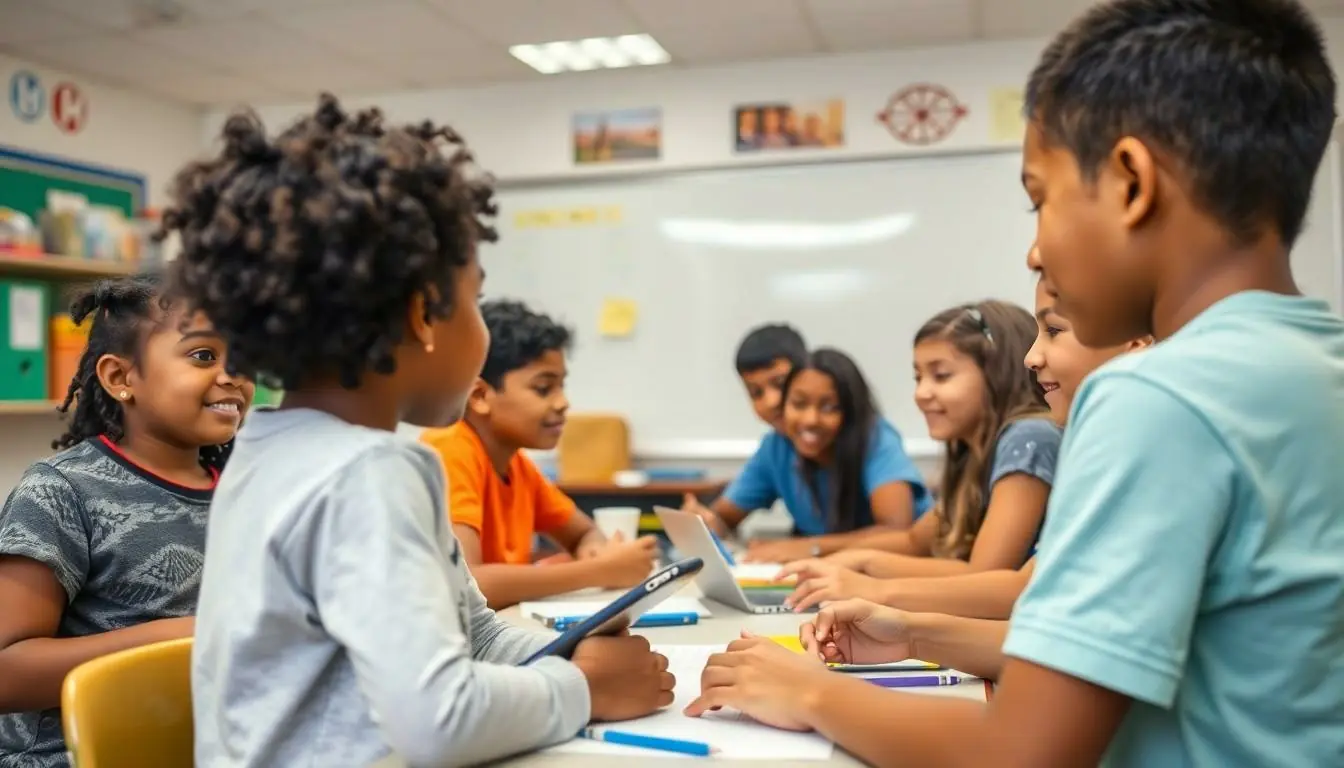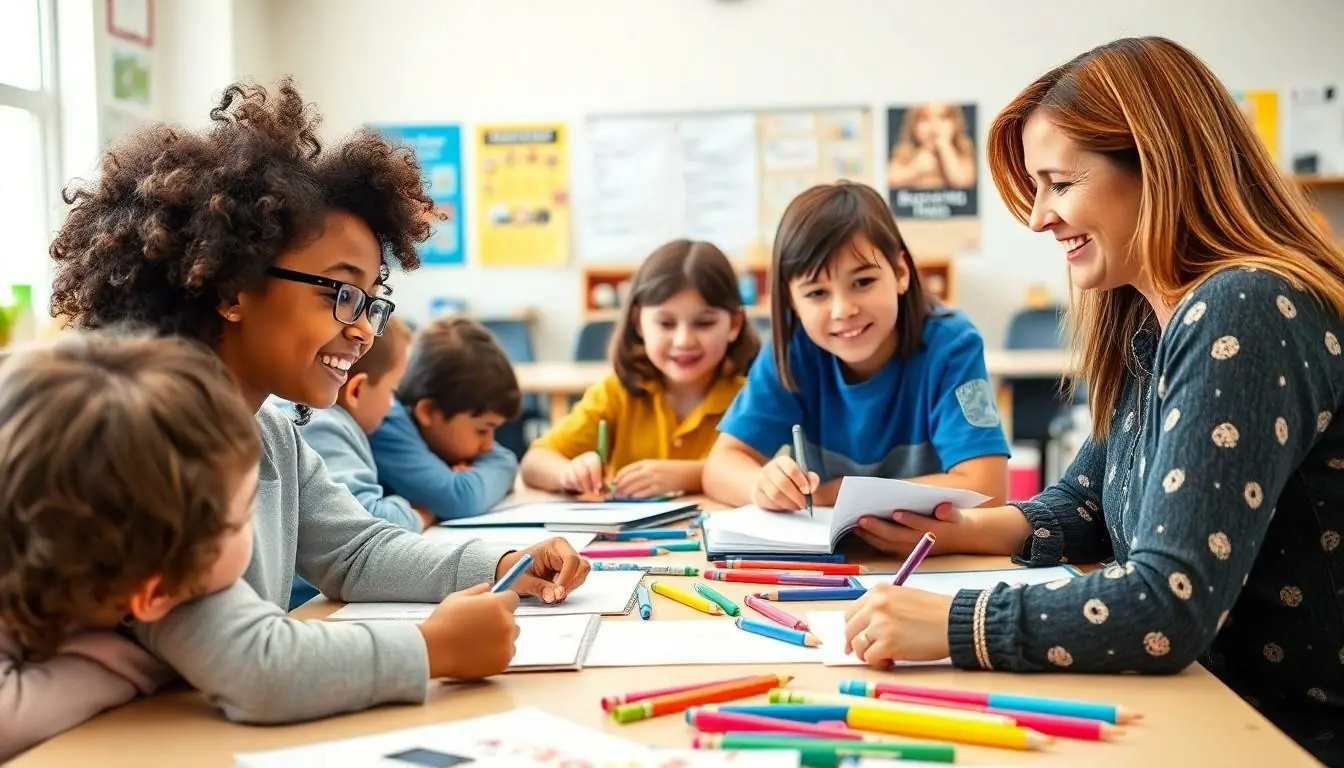Table of Contents
ToggleVirginia’s K-12 education system is like a roller coaster ride—full of ups, downs, and unexpected twists. With a rich history and a commitment to innovation, it’s no wonder parents and students alike are hopping on board. From the bustling classrooms of Northern Virginia to the quieter towns of the Shenandoah Valley, the state’s schools are shaping the future one student at a time.
But let’s be real: navigating the world of K-12 education can feel like trying to solve a Rubik’s Cube blindfolded. From choosing the right school to understanding standardized tests, it’s a maze that can leave anyone scratching their head. Whether you’re a parent, teacher, or student, understanding the ins and outs of Virginia’s education system is crucial. Buckle up as we dive into what makes K-12 education in Virginia tick and how it can set students up for success.
Overview of K-12 Education in Virginia
K-12 education in Virginia encompasses a broad range of public and private schooling options. The state boasts 132 school districts and around 1,800 public schools reaching over 1.2 million students. Diverse educational settings exist, catering to varying needs across urban and rural communities.
Administrative oversight falls under the Virginia Department of Education, which implements statewide standards and performance assessments. Standards of Learning (SOL) assessments play a crucial role in evaluating student achievement. SOL tests assess core subjects including English, math, science, and social studies from grades 3 to 8 and for high school courses.
Families often explore various choices such as charter schools, magnet programs, and private institutions. Nearly 10% of students are enrolled in these alternative solutions. Enrollment options also include homeschooling, which continues to grow in popularity among Virginia families.
Funding sources for K-12 education include local, state, and federal contributions. Local governments primarily finance schools through property taxes, creating disparities based on community wealth. State funding attempts to rectify inequalities through programs aimed at supporting underfunded schools.
Parents, teachers, and community members contribute to shaping educational experiences through engagement in local school boards and education initiatives. They play a vital role in advocating for resources and programs that enhance student outcomes. Overall, K-12 education in Virginia emphasizes innovation, adaptability, and inclusivity, reflecting the diverse needs of its student population.
Educational Structure and Curriculum

Virginia’s K-12 education system features a structured approach designed to accommodate diverse learning needs across various age groups. The focus lies on comprehensive curricular frameworks aligning with state standards.
Elementary Education
Elementary education in Virginia serves children from kindergarten through fifth grade. This foundational stage emphasizes literacy, numeracy, and social skills development. Additionally, Virginia’s Standards of Learning outline specific objectives for each grade level, ensuring that students acquire essential knowledge. Teachers utilize various instructional strategies to engage learners and address varying abilities. Schools often incorporate arts, technology, and physical education to foster well-rounded development. Parents actively participate, often volunteering or engaging in school activities, which enhances the community connection.
Secondary Education
Secondary education encompasses grades six through twelve in Virginia. This segment prepares students for advanced learning and workforce readiness. Core subjects include English, mathematics, science, and social studies, complemented by electives in arts, career, and technology. High school programs include advanced placement courses and dual enrollment opportunities with local colleges. Virginia’s assessment system, featuring standardized tests like the SOL, gauges student progress and readiness for graduation. Support services, such as counseling and mentoring, help students navigate academic and career options, promoting overall success.
Key Challenges in K-12 Education Virginia
K-12 education in Virginia faces several challenges that affect student outcomes and overall educational quality.
Funding and Resources
Funding disparities significantly impact educational resources across Virginia’s school districts. Local property taxes often dictate the amount of funding available, leading to inequalities between affluent and less prosperous areas. Nearly 1.2 million students rely on these resources, yet schools in wealthier districts frequently receive more support. Additionally, inadequate funding might limit access to advanced technology and extracurricular activities. Schools struggle to provide essential materials, impacting student engagement and learning. Parents, teachers, and community members frequently advocate for increased funding to ensure all students have equal opportunities to succeed.
Teacher Shortages
Teacher shortages create significant obstacles in Virginia’s K-12 education system. Many districts report difficulty attracting and retaining qualified educators due to competitive salaries offered in nearby states. High turnover rates disrupt student learning and create inconsistent educational experiences. Additionally, the increased workload can lead to teacher burnout, further compounding the issue. Schools implement various initiatives to address recruitment and retention, including professional development and support programs. Ensuring a stable, well-qualified teaching workforce remains essential for improving student achievement.
Recent Developments and Initiatives
Recent developments within Virginia’s K-12 education highlight a strong push towards modernization. Numerous initiatives focus on enhancing student learning through strategic improvements.
Technology Integration
Technology integration remains a priority in Virginia’s schools, facilitating innovative teaching methods. Educators embrace digital tools such as interactive whiteboards and online learning platforms. The state invests in expanding broadband access, especially in rural areas, ensuring connectivity for all students. Increased training programs for teachers bolster their ability to utilize technology effectively. Students engage with new resources, promoting collaboration and independent learning. Recent surveys indicate that approximately 70% of schools report enhanced student engagement due to these technological advancements.
Curriculum Updates
Curriculum updates aim to align with evolving educational standards and workforce demands. The Virginia Department of Education introduces revisions to the Standards of Learning, emphasizing critical thinking and problem-solving skills. New subject areas like computer science receive greater focus, preparing students for future careers. Schools also adopt interdisciplinary approaches, integrating various subjects to enhance relevance and application. As a result, curriculum adjustments support the diverse learning needs of approximately 1.2 million students across the state. Feedback from educators and parents continually shapes these updates, ensuring they meet community expectations and educational goals.
Virginia’s K-12 education system stands as a dynamic landscape filled with opportunities and challenges. With a commitment to innovation and inclusivity, it strives to meet the diverse needs of its student population. The ongoing efforts to modernize education through technology integration and curriculum updates highlight the state’s dedication to enhancing student learning experiences.
However, addressing funding disparities and teacher shortages remains crucial for ensuring equitable access to quality education. As Virginia continues to evolve its educational framework, collaboration among parents, educators, and communities will play a pivotal role in shaping a brighter future for all students. The journey through K-12 education in Virginia is not just about academic achievement but also about fostering a supportive environment where every learner can thrive.




